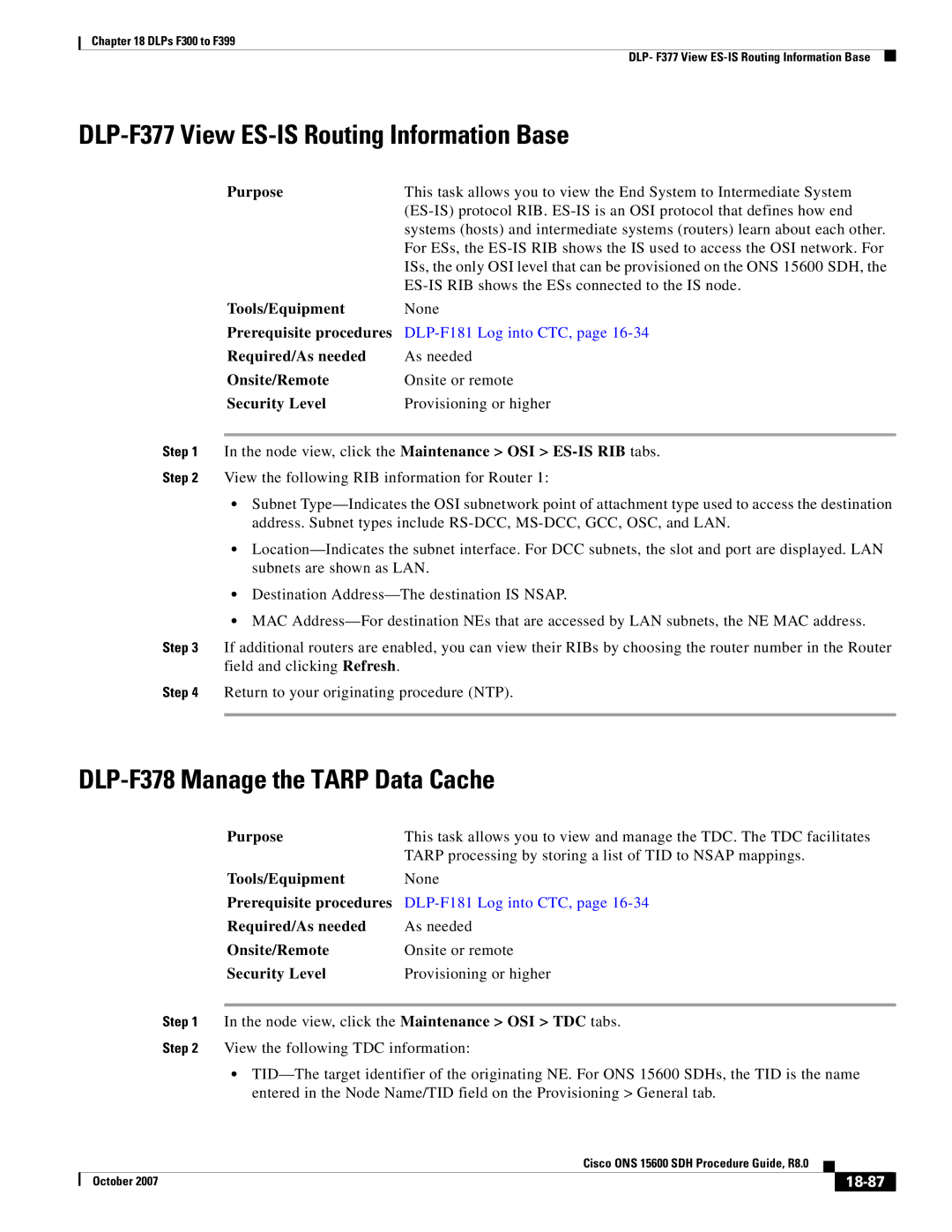
Chapter 18 DLPs F300 to F399
DLP- F377 View
DLP-F377 View ES-IS Routing Information Base
Purpose | This task allows you to view the End System to Intermediate System |
| |
| systems (hosts) and intermediate systems (routers) learn about each other. |
| For ESs, the |
| ISs, the only OSI level that can be provisioned on the ONS 15600 SDH, the |
| |
Tools/Equipment | None |
Prerequisite procedures | |
Required/As needed | As needed |
Onsite/Remote | Onsite or remote |
Security Level | Provisioning or higher |
Step 1 In the node view, click the Maintenance > OSI >
Step 2 View the following RIB information for Router 1:
•Subnet
•
•Destination
•MAC
Step 3 If additional routers are enabled, you can view their RIBs by choosing the router number in the Router field and clicking Refresh.
Step 4 Return to your originating procedure (NTP).
DLP-F378 Manage the TARP Data Cache
Purpose | This task allows you to view and manage the TDC. The TDC facilitates |
| TARP processing by storing a list of TID to NSAP mappings. |
Tools/Equipment | None |
Prerequisite procedures |
|
Required/As needed | As needed |
Onsite/Remote | Onsite or remote |
Security Level | Provisioning or higher |
Step 1 In the node view, click the Maintenance > OSI > TDC tabs.
Step 2 View the following TDC information:
•
|
| Cisco ONS 15600 SDH Procedure Guide, R8.0 |
|
| |
|
|
| |||
| October 2007 |
|
|
|
|
|
|
|
| ||
